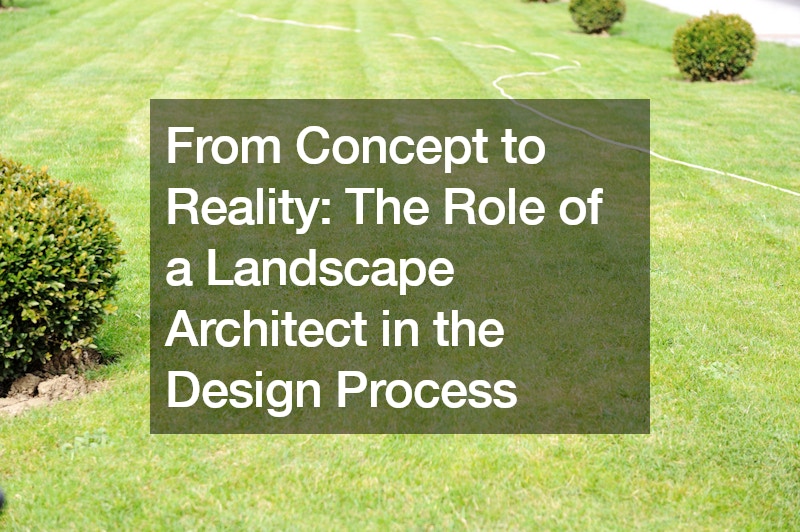Have you ever wondered where architects develop ideas to create elaborate buildings, public spaces, and other designs? The journey from a simple sketch to a final, tangible structure is complex and intricate, particularly for a landscape architect. This article delves into the comprehensive design process, showcasing the crucial role a landscape architect plays from the initial concept to the final construction.
Understanding the Initial Concept Designs are born out of necessity, driven by a client’s needs, a competition, or an event. The first step in the design process involves understanding the requirements of the “program.
” This program outlines what the client wants to achieve and sets the parameters for the project. For instance, a client may wish to transform a recently acquired plot of land into a multi-use high-rise with an adjacent promenade.
With the program defined, the landscape architect begins by evaluating the requirements and researching the site’s location and history. This initial stage involves site visits to assess opportunistic views, shading, vegetation, and other environmental factors that could influence the design. The goal is to gather all necessary information to inform the next phase: developing a conceptual design.
Developing the Conceptual Design A conceptual design, often referred to as a “parti diagram,” is essentially the project’s blueprint. These diagrams can be inspired by various factors such as the site’s history, existing structures, or the project’s functional requirements. Inspiration-driven concepts might draw from the site’s past uses or significant historical elements, while form-driven concepts could focus on geometric shapes like circles, rectangles, or biomorphic forms.
For example, if a site has a rich historical background, the landscape architect might incorporate elements that reflect this heritage into the design. Alternatively, the concept might prioritize spaces for leisure and community activities if the project is recreationally themed. Multiple concepts are usually developed at this stage, each exploring different possibilities to meet the project’s needs.
Schematic Design: Exploring Possibilities Once the initial concepts are reviewed and approved, the project moves into the schematic design phase. Here, the landscape architect develops detailed plans and models based on the chosen concept. This phase involves creating several design schemes, which are then presented to colleagues, other disciplines, and the client for feedback.
The schematic design phase is a time for bold ideas and expansive thinking. The landscape architect explores various layout options, considers how sunlight interacts with the structures, and examines the placement of different elements within the project. This stage can last from a few weeks to several months, depending on the project’s complexity and timeline.
Design Development: Refining the Vision After narrowing down the design options, the project enters the design development phase. This stage focuses on refining the chosen scheme and making it more realistic. The landscape architect collaborates closely with the client and other disciplines to ensure the design meets all requirements and is feasible within the given constraints.
During design development, every aspect of the site is examined in detail. This includes circulation patterns, building layouts, and environmental considerations. The goal is to create a design that looks good on paper and works well in reality. This phase also involves a more accurate estimation of the project’s costs, ensuring the design stays within budget.
Construction Documentation: Detailing the Design With the design refined and approved, the next phase is construction documentation. This stage involves creating detailed drawings and specifications to guide the construction process. The landscape architect works meticulously to ensure that every detail is accounted for, from the ground level to the top of the structure.
Construction documentation is a collaborative effort, requiring input from various disciplines to ensure everything fits together seamlessly. This phase is critical for ensuring the project is built as intended and meets all safety and regulatory standards. It can be a lengthy process, often taking several months to complete.
Construction Administration: Bringing the Design to Life The final phase of the design process is construction administration. The landscape architect oversees the construction to ensure it adheres to the design intent. This phase involves regular site visits, coordination with contractors, and addressing any issues during construction.
A good project manager is essential during this phase to ensure the project stays on track and any necessary adjustments are made promptly. The landscape architect’s involvement continues until the project is completed and meets all specifications. This phase can vary in duration, depending on the project’s size and complexity.
Conclusion The role of a landscape architect is pivotal in transforming a conceptual idea into a functional, aesthetically pleasing reality. From understanding the initial requirements and developing conceptual designs to refining the vision and overseeing construction, the landscape architect ensures that every detail is meticulously planned and executed. This comprehensive process highlights the expertise and dedication required to bring architectural projects to life, demonstrating the profound impact a landscape architect has on the built environment.
.

